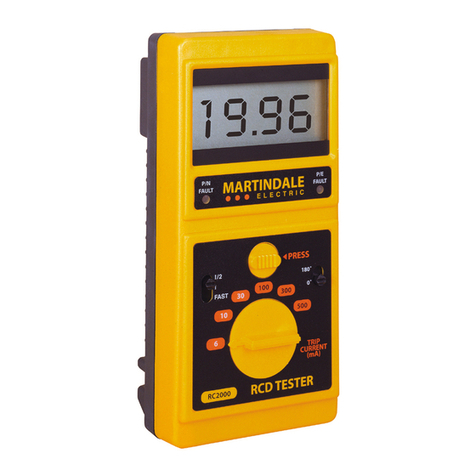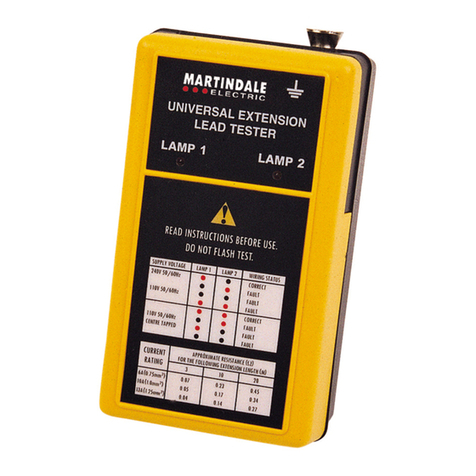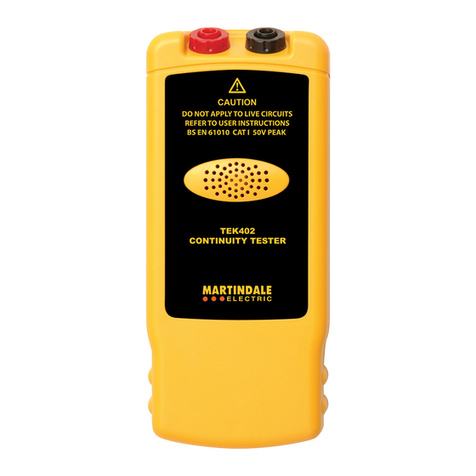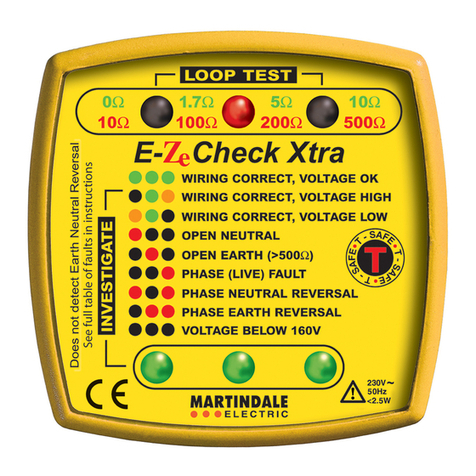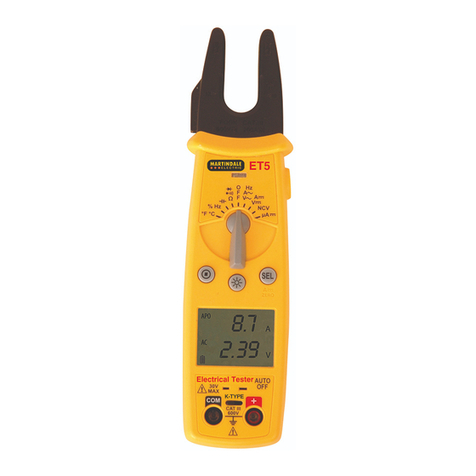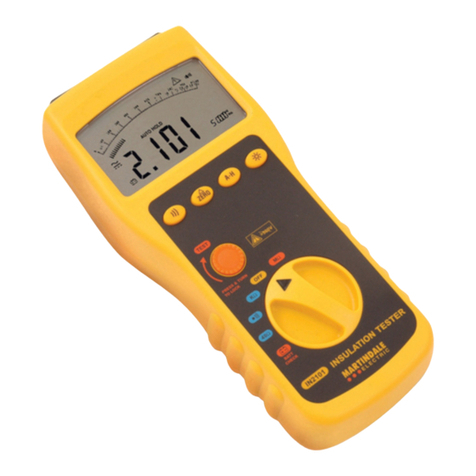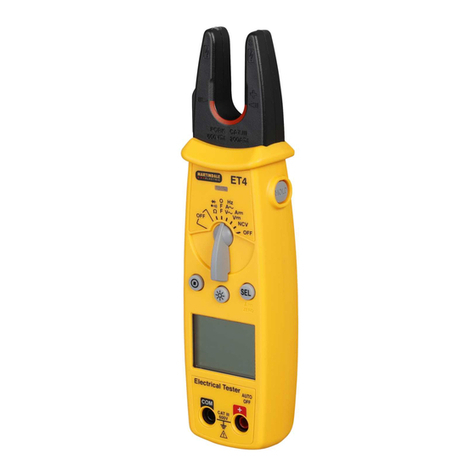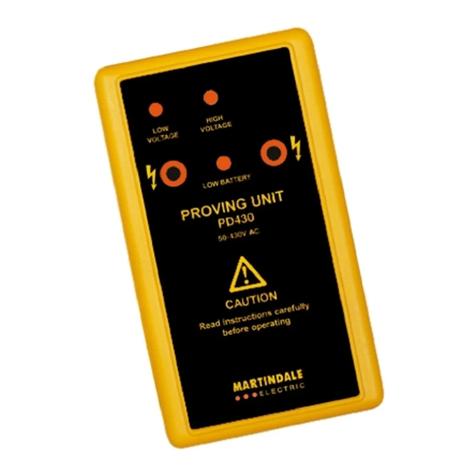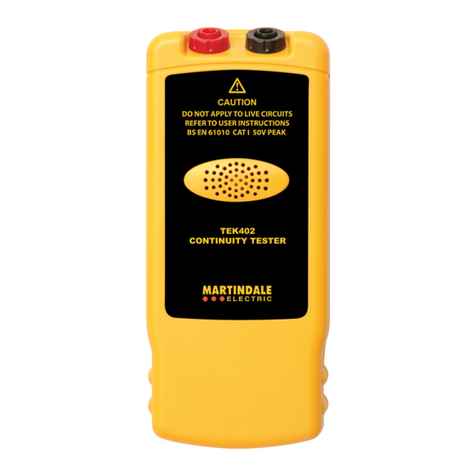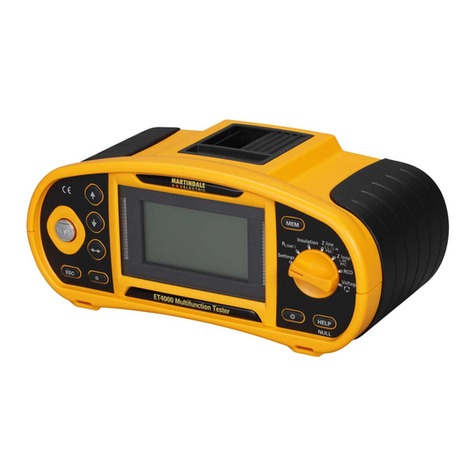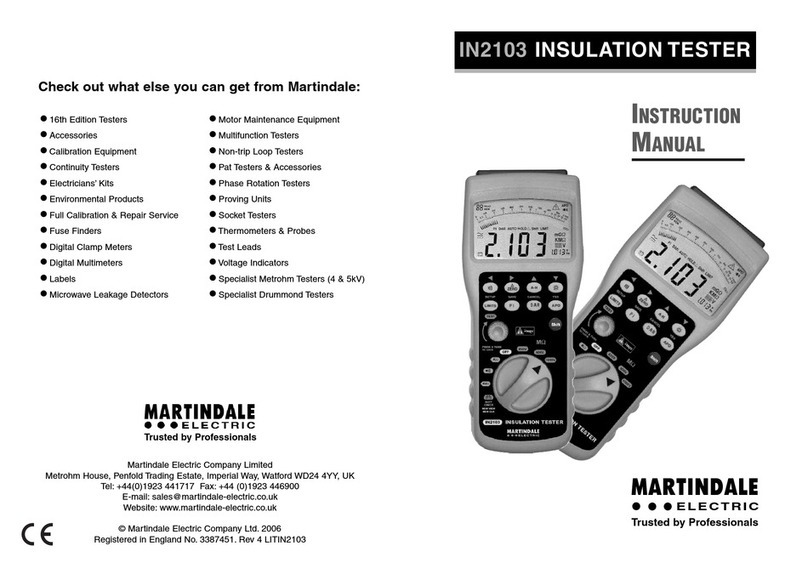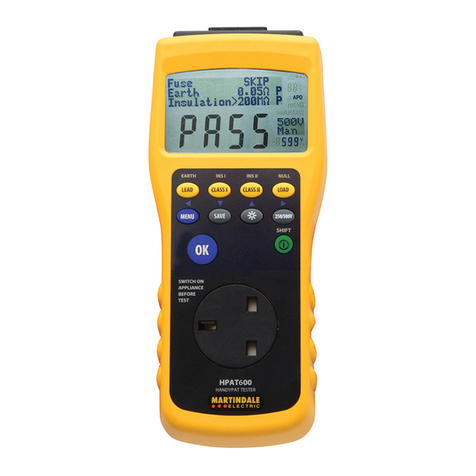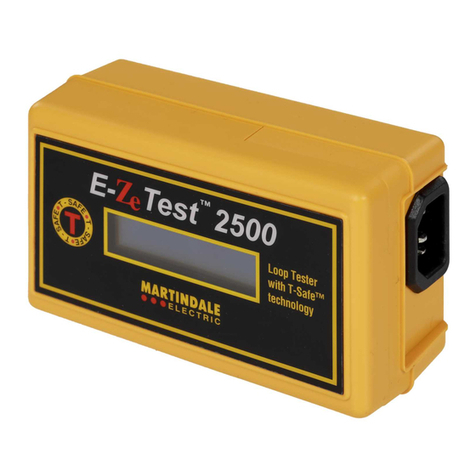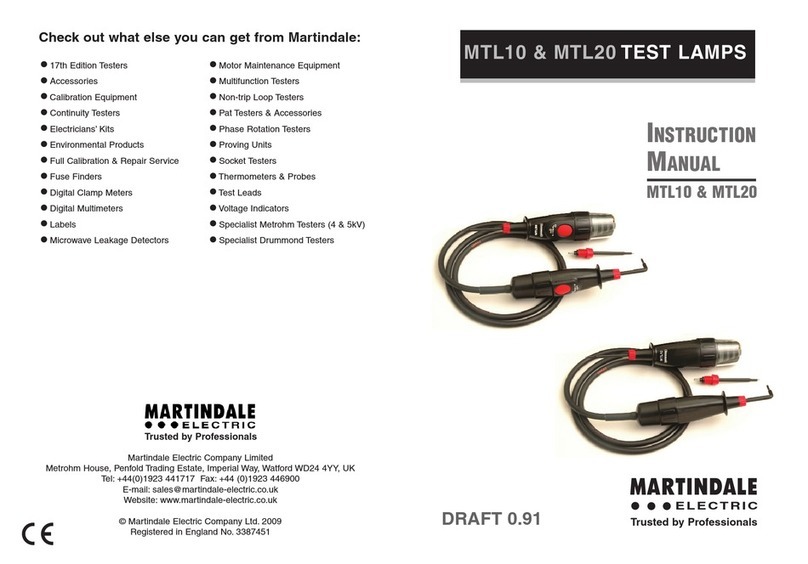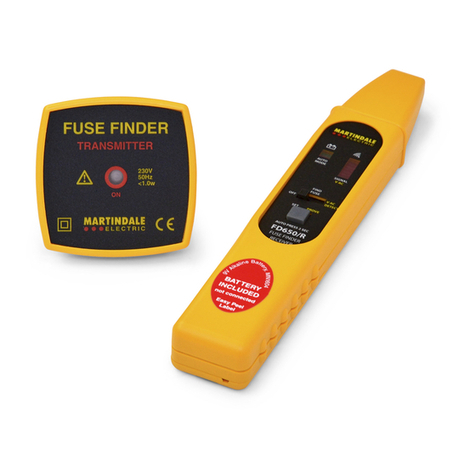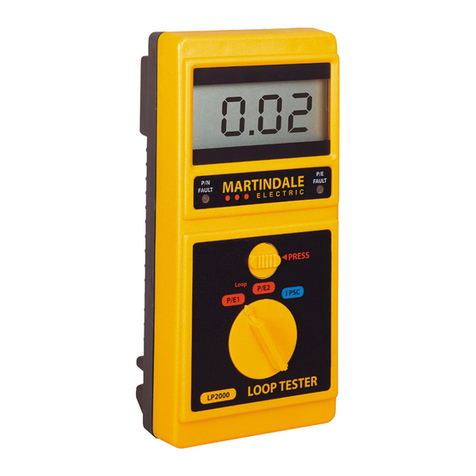1. SAFETY INFORMATION
REMEMBER: SAFETY IS NO ACCIDENT
These instructions contain both information
and warnings that are necessary for the
safe operation and maintenance of this
product. It is recommended that you read
the instructions carefully and ensure that
the contents are fully understood. Failure to
understand and to comply with the warnings
and instructions can result in serious injury,
damage or even death.
Particular attention should be paid to the
Warnings, Precautions and Technical
Specifications.
Please keep these instructions for future
reference. Updated instructions and product
information are available at:
www.martindale-electric.co.uk
1.1 Meaning of Symbols and Markings
Caution - risk of danger & refer to
instructions
Caution - risk of electric shock
Equipment protected by double or
reinforced insulation (Class II)
Suitable for live working
CAT II (Measurement Category II) is applicable
to test and measuring equipment connected
directly to utilization points (socket outlets
and similar points) of the low-voltage
MAINS installation.
CAT III (Measurement Category III) is applicable
to test and measuring equipment connected
to the distribution part of the building’s low-
voltage MAINS installation.
CAT IV (Measurement Category IV) is applicable
to test and measuring equipment connected
at the source of the building’s low-voltage
MAINS installation.
For further information on measurement categories
visit www.martindale-electric.co.uk/measurement_
categories.php.
Equipment complies with relevant EU
Directives
End of life disposal of this equipment
should be in accordance with relevant
EU Directives
12
1.2 Precautions
This product has been designed with your
safety in mind, but please pay attention to
the following warnings and cautions before
use.
Warnings
In order to avoid the danger of electrical
shock, it is important that proper safety
measures are taken when working with
voltages exceeding 30V AC rms, 42V AC
peak or 60V DC.
Where applicable other safety measures
such as the use of protective gloves, goggles
etc. should be employed.
The voltage tester must only be used by a
skilled and competent person who is familiar
with the relevant regulations, the safety risks
involved and the consequent normal safe
working practices.
Before each use the voltage tester should
be examined for damage, cracks, cuts or
scratches to the housing, cable and prods.
The cable has black outer and contrasting
inner insulation, to allow damage to the
cable to be easily identified. If there is any
doubt the voltage tester should not be
used.
Make sure the voltage tester is dry, clean
and free from dust, grease and moisture
while in use to avoid the danger from electric
shock due to surface leakage.
Before and after each use, the voltage tester
must be proven using a suitable proving
device or a known good voltage source. Do
not use the voltage tester if any expected
LED’s fail to illuminate correctly during
proving.
Testing for a voltage that exceeds the
specified limits of the voltage tester may
damage the voltage indicator and may
expose the operator to a shock hazard.
Always check the voltage indicator’s
specified limits before use.
The voltage tester must only be used in low
voltage systems of CAT IV up to 600V, of
CAT III and CAT II up to 690V, and within the
operating temperature and humidity range
specified.
The specified measurement category means
the voltage tester will be safe to the user if
inadvertently connected to a voltage up to
